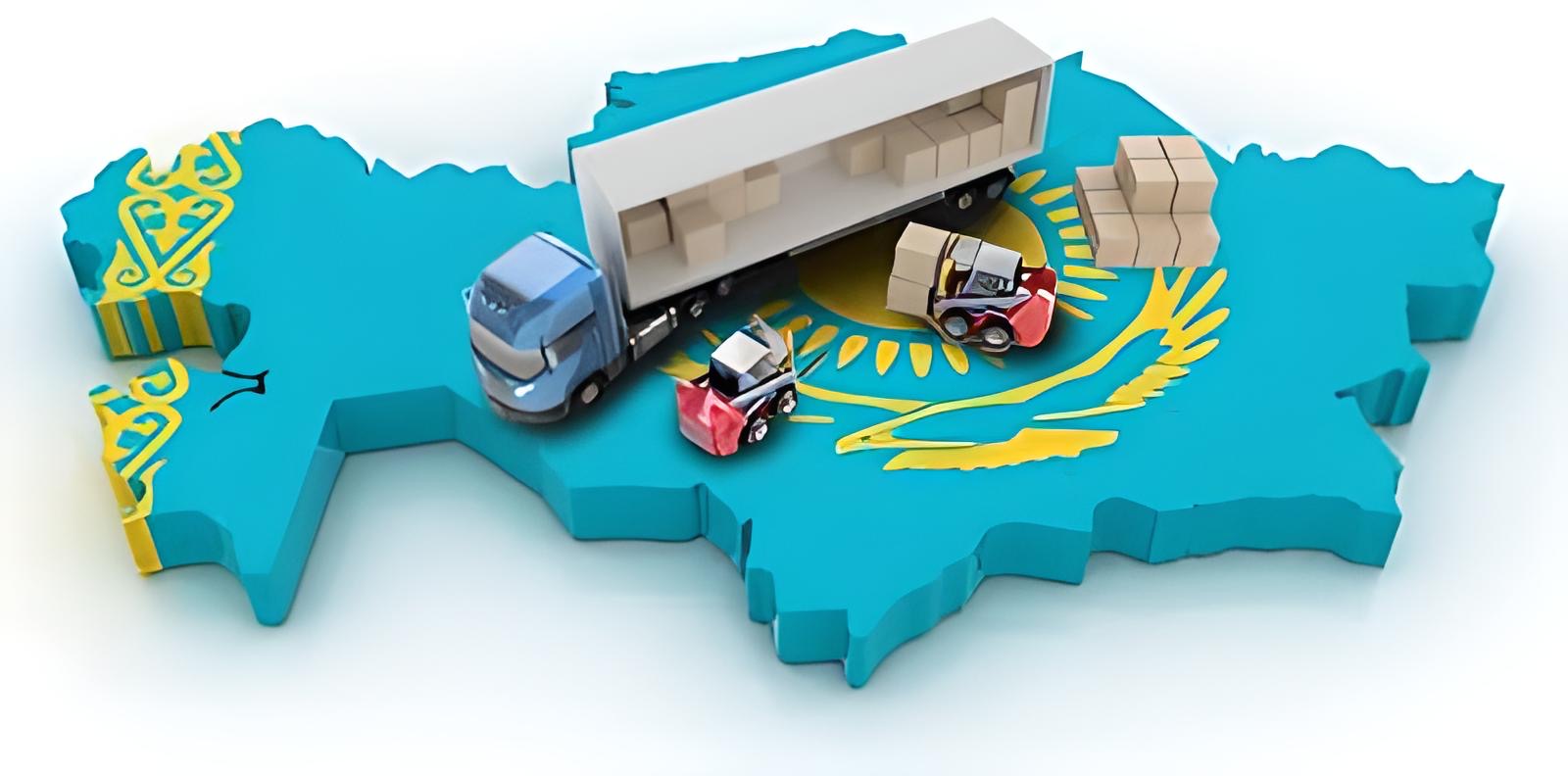Transport routes run like blood in the veins of an economy. Therefore, an efficient transport system with a geostrategic layout is all the more important for a country like Kazakhstan. The transport system inherited by Kazakhstan since independence in 1991 neither provided access to external markets nor formed a single internal market.

Photo credit: zakon.kz.
The fragmentation of transport routes reflected the fragmentation of the economy. However, the policymakers in Kazakhstan timely realized its geostrategic location between Europe and China and between Europe and South Asia. Therefore, the country’s leadership not only developed Kazakhstan’s potential as a transit hub but also laid down a transportation network of railways, highways, airways, and sea routes in the breadth and width of Kazakhstan with linkages to internal and external markets. Now, the transcontinental roads passing through the vast territory of Kazakhstan have multiplied the transit and transport potential of the leading economy of Central Asia.
Major segments of the transport sector of Kazakhstan include rail, road, marine, aviation, and pipeline transport. This transportation industry contributes 11 percent to the national GDP as of Feb. 9, 2022. At a plenary session of the Fifth Kazakhstan Global Investment Roundtable Conference in Astana on Oct. 19, 2022, Deputy Chair of Kazakh Transport Committee Kassym Tilepov said nearly $35 billion were invested in Kazakhstan’s transport sector over the past five years, with 2,500 kilometers of new railways also being built.

Muhammad Rafiq.
Being landlocked, Kazakhstan has to bear high transportation and transit costs. For instance, shipping containers from any Central Asian city to Shanghai is five times more expensive than from Poland or Türkiye via ship.
Despite this, Kazakhstan has immense geostrategic significance, enormous natural resources, and vast potential for transit and trade. Compared to 2020, in 2021, an increase of 47 percent was observed in the number of TEUs (twenty-foot equivalent unit is a conventional unit for measuring the capacity of freight vehicles) transiting through Kazakhstan. In fact, consequent upon the special military operation in Ukraine, disruptions in the primary supply chains have reinforced Kazakhstan’s transport and transit potential.
The railway brings 52.2 percent cargo turnover, as rail transport has a significant role in transcontinental and transit operations between Europe and Asia. Kazakhstan’s rail transport is an active part of the Euro-Asian Transport Link (EATL) and its intermodal services. Then, the Trans-Caspian International Transport Route (TITR), also called the Middle Corridor, is a realistic alternative to the China-Europe cargo train. Rail freight transport under TITR carries bulk commodity shipments of oil, ferrous, metals, coal, grain, and other goods. The government of Kazakhstan has planned to invest $1.6 billion in the modernization of railway projects and about $4 billion in the depot, rail carriage renovation, and overhaul of rail locomotives.
The air transportation sector is also growing. During the first half of 2022, airlines of Kazakhstan carried approximately 4.6 million passengers, which is 9 percent higher than the previous year of the same period. The country’s air industry runs 498 flights weekly with 28 countries in Europe, Russia, South East Asia, and Central Asia. Geography reflects the vast scope of air cargo. The Open Sky Agreement between Kazakhstan and the USA was signed in 2022 for direct passenger flights between countries.
In addition, the government is working to increase cargo terminals. The Almaty International Airport has excellent potential for cargo transportation, where a new terminal is being developed with a financial package of $372.2 million from the International Finance Corporation (IFC) and the European Bank for Reconstruction and Development (EBRD). Air Astana, the national carrier, will buy two freighters in 2024. The government is determined to establish Kazakhstan as an air cargo hub between China and Europe.
Kazakhstan plays a vital role in making the New Silk Road in the 21st century. A network of regional, national, and international highways has been developed across the country. Kazakhstan accounts for 70 percent of the land transit traffic from China to Europe and vice versa. During the sixth Kazakhstan-China Business Council meeting held in Beijing on Sept. 11, 2019, President Kassym-Jomart Tokayev said, “Five railway and six international automobile routes pass through the territory of Kazakhstan, which connects China and other Asian countries with Europe and the Middle East. This makes it possible to deliver goods to Europe from China through Kazakhstan in 15 days, while shipping by sea takes two to three times longer. And the state program of infrastructure development Nurly Zhol being implemented in Kazakhstan, coupled with the Chinese project One Belt – One Road, will revive the former greatness of the Silk Road.”
A total of 51 mega projects of the Belt and Road Initiative worth $35 billion are operating in Kazakhstan, out of which $3.5 billion is invested in Khorgos dry port. With access to wider trade networks, massive savings in logistics, and reasonable earnings through logistic centers, BRI not only helps Kazakhstan become an eminent regional player but also penetrates the global markets.
Three Caspian Sea ports of Kazakhstan offer tremendous opportunities to develop intermodal transportation and forwarding services. Last March, Kazakhstan, Türkiye, Georgia, and Azerbaijan signed a declaration on the Middle Corridor with a resolve to integrate the corridor into the international transport system. Development work at Aktau and Kuryk ports continues to increase capacity and construct shipyard, berths, and port area dredging.
President Tokayev sees the Nurly Zhol national program as one of the critical drivers of the national economy, with the primary goal of constructing and reconstructing roads. The objective is to ensure the integration of Kazakhstan into global transport corridors. According to the plan, it is expected to build, repair and reconstruct 27,000 kilometers of roads by 2025.
To enhance its transport potential, Kazakhstan has always kept alive its quest for alternative trade routes.
Kazakhstan is part of the Quadrilateral Transit and Trade Agreement (QTTA) along with Pakistan, China, and Kyrgyzstan, an alternative gateway for Central Asia to the warm waters of Gwadar port, by completely circumnavigating Afghanistan, in case of instability. QTTA would link landlocked Central Asia to China’s Xinjiang region, which is connected with the Karakoram Highway toward the sea port of Gwadar. In a meeting on January 27, 2023, in Islamabad, Ambassador of Kazakhstan Yerzhan Kistafin and Syed Naveed Qamar, the Federal Minister for Commerce, agreed to sign the Kazakhstan-Pakistan Transit Trade Agreement. For this purpose, agreements between Kazakh Invest and QazTrade from Kazakhstan and Trade and Development Authority of Pakistan (TDAP) and Board of Investment (BOI) from Pakistan were already signed in December last year.
During his address at the SCO Summit in September 2022, President Tokayev listed transit and transport among the priority areas to expand economic cooperation. He said, “The Kazakhstan-Turkmenistan-Iran railway, which offers the shortest route from East Asia to the countries of the Persian Gulf, has great potential. Kazakhstan’s transit and transport cooperation with the countries of Central Asia is developing dynamically. We welcome the implementation of promising projects to ensure the interconnectedness of our region’s countries.”
The author is Muhammad Rafiq (Pakistan), a senior banker based in Kazakhstan with a keen interest in Central Asian studies.


